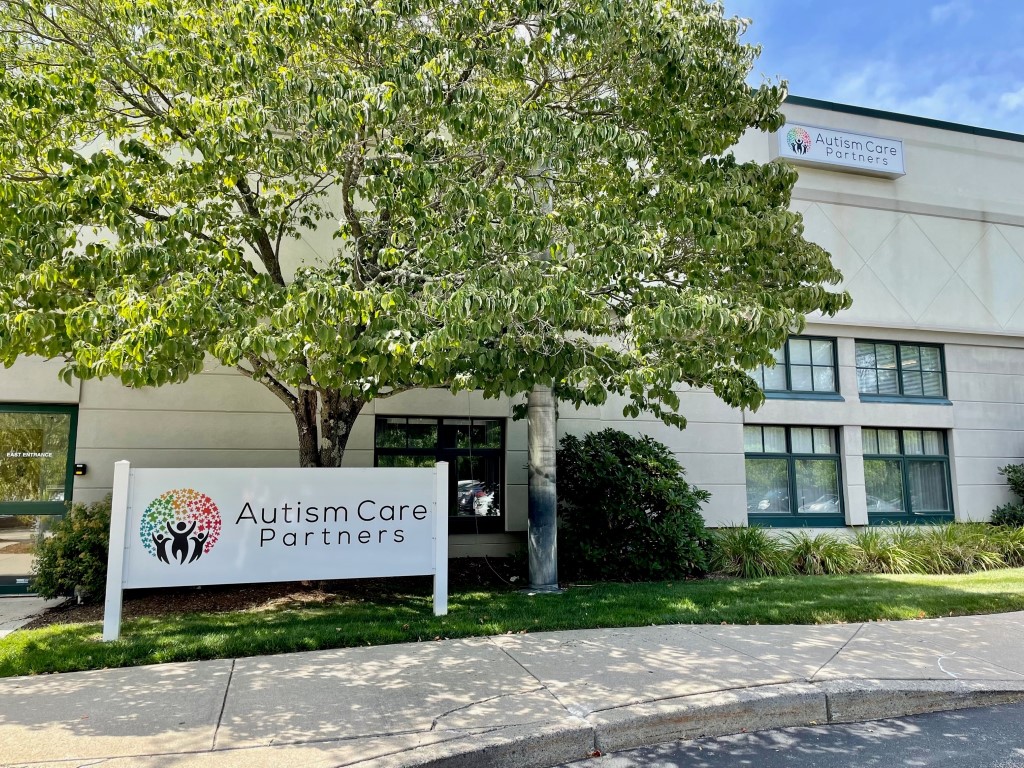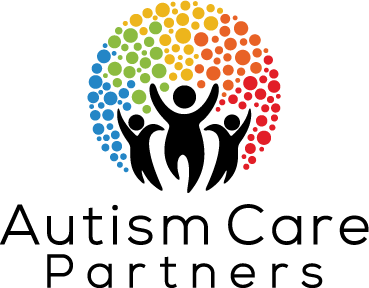Visual Immersion System
Visual Immersion System Overview
The Visual Immersion System™ (VIS™) is an evidence-based, technology-supported method developed to enhance communication and language skills for individuals with autism spectrum disorder (ASD) and other developmental disabilities. The VIS™ framework utilizes specifically-designed immersive visual supports and other technologies that are supported by decades of research and evidence-based practice.
The VIS™ meets individuals where they are—allowing for the development of a treatment plan based on the client’s level of understanding, preferred means of expression, learning style, and goals. Within the VIS™, visuals are used for a variety of reasons, including to:
- aid in teaching new concepts and skills
- support organization in everyday activities (e.g., with visual schedules, first-then displays)
- provide a primary or supplementary means of expression
- clarify meaning to help with spoken language comprehension
- encourage spoken language output
If you’re interested in learning more about VIS™ and how this framework may help you and your family, contact us today.

Research Behind the VIS™
The research and evidence supporting VIS™ protocols have evolved, led by the work of ACP’s Dr. Howard Shane and his associates in the Autism Language Program at Boston Children’s Hospital. It is based on the following rationale:
- People with ASD tend to have strong visual processing skills.
- Visuals offer a way of making language a concept that can be seen and touched; spoken language, on the other hand, is gone in an instant.
- Individuals with ASD seem to understand visual graphics more than spoken language.
- Use of visual supports capitalizes on strengths in concrete thinking and compensates for areas of relative weakness associated with acquisition of oral language skills.
Additionally, research shows that immersing someone in visual language and Augmentative and Alternative Communication (AAC) can act as an accelerant to learning language and generating and using symbols to express oneself.
Autism Care Partners is the only provider equipped and able to deploy the VIS™ nationally. Contact us to learn more today!

Technology provides the opportunity for children to learn in ways that were never before possible.
– Dr. Howard C. Shane
To view an example of the VIS at work, to read about and see an example of the VIS™ in action, please see this news article from WSYR-TV!
Evidence Supporting The Visual Immersion System™ (VIS™)
Visual supports have been identified as an evidence-based practice (National Center for Autism, 2015; Odom et al., 2010)
Video modeling is a technique that has been declared as an evidence-based practice (National Center for Autism, 2015; Odom et al., 2010)
Electronic screen media is preferred by individuals with ASD (Shane et al., 2008)
Mobile technologies are effective in terms of communication for children with developmental disabilities (Alzrayer et al., 2014; Kagohara et al., 2012; Shane et al., 2012)
Delivery of VIS instruction includes empirically-supported behavioral principles (Shane et al., 2014)
Schlosser, R. W., Brock, K., Koul, R., Shane, H. C., & Flynn, S. (in press). Do animations facilitate understanding of graphic symbols in children with autism. Journal of Speech, Language, and Hearing Research.
Schlosser, R. W., Koul, R., Shane, H., Sorce, J., Brock, K., Harmon, A., Moerlein, M. & Hearn, E. (2014). Effects of animation on naming and identification across two graphic symbols sets representing actions and prepositions. Journal of Speech, Language, and Hearing Research, 57, 1779-1791.
Schlosser, R. W., Shane, H., Sorce, J., Koul, R., Bloomfield, E., Debrowski, L., DeLuca, T., Miller, S., Schneider, D., & Neff, A. (2012). Animation of graphic symbols representing actions and prepositions: Effects on transparency, name agreement, and identification. Journal of Speech, Language, and Hearing Research, 55, 342-358.
Schlosser, R. W., Shane, H. C., Sorce, J., Koul, R., & Bloomfield, E. (2011). Identifying performing and underperforming graphic symbols for verbs and prepositions in animated and static formats: A research note. Augmentative and Alternative Communication, 27, 205-214.
Choe, N., Shane, HC, Schlosser, RW, Haynes, CW, & Allen, A. Directive-Following Based on Graphic Symbol Sentences Involving an Animated Verb Symbol: An Exploratory Study, Communication Disorders Quarterly. November, 2020, https://doi.org/10.1177/1525740120976332
Harmon, A. C., Schlosser, R. W., Gygi, B., Shane, H. C., Kong, Y. Y., Book, L., … & Hearn, E. (2014). Effects of environmental sounds on the guessability of animated graphic symbols. Augmentative and Alternative Communication, 30(4), 298-313.
Anna A. Allen, Howard C. Shane, Ralf W. Schlosser & Charles W. Haynes (2021) The effect of cue type on directive-following in children with moderate to severe autism spectrum disorder, Augmentative and Alternative Communication, DOI: 10.1080/07434618.2021.1930154
Remner, R., Baker, M., Karter, C., Kearns, K., & Shane, H. C. (2016). Use of augmented input to improve understanding of spoken directives by children with moderate to severe autism spectrum disorder. eHEARSAY, Journal of the Ohio Speech Language Hearing Association, 6(3), 4-10.
Schlosser, R. W., Laubscher, E., Sorce, J., Koul, R., Flynn, S., Hotz, L., Shane, H. (2013). Implementing directives that involve prepositions with children with autism: A comparison of spoken cues with two types of augmented input. Augmentative and Alternative Communication, 29, 132–145. doi:10.3109/07434618.2013.784928
Yu, C., Shane, H., Schlosser, R. W., O’Brien, A., Allen, A., …& Flynn, S. (2018). An exploratory study of speech-language pathologists using the Echo Show™ to deliver visual supports. Advances in Neurodevelopmental Disorders, 2, 286-292. doi:10.1007/s41252-018-0075-3
Allen, A. A., Shane, H. C., & Schlosser, R. W. (2018). The Echo™ as a speaker-independent speech recognition device to support children with Autism: An exploratory study. Advances in Neurodevelopmental Disorders, 2, 69-74. doi: 10.1007/s41252-017-0041-5
O’Brien, A., O’Brien, M., Schlosser, R. W., Yu, C., Allen, A. A., …& Shane, H. C. (2017). Repurposing consumer products as a gateway to just-in-time communication. Seminars in Speech and Language, 38(4), 297-312.
Schlosser, R. W., O’Brien, A., Yu, C., Abramson, J., Allen, A. A., …& Shane, H. C. (2017). Repurposing everyday technologies to provide just-in-time visual supports to children with intellectual disability and autism: A pilot feasibility study with the Apple Watch. International Journal of Developmental Disabilities, 63, 221-227.
O’Brien, A., Schlosser, R. W., Shane, H. C., Yu, C., Abramson, J., Allen, A. A., …& Dimery, K. (2016). Just-in-time visual supports for children with autism via the Apple Watch: A pilot feasibility study. Journal of Autism and Developmental Disorders, 46(12), 3818-3823. doi:10.1007/s10803-016-2891-5
Schlosser, R. W., Shane, H. C., Allen, A. A., Abramson, J., Laubscher, E., & Dimery, K. (2015, October 10). Just-in-time supports in augmentative and alternative communication. Journal of Developmental and Physical Disabilities, 28(1), 177-193. doi: 10.1007/s10882-015-9452-2
Abramson, J., Laubscher, E., & Dimery, K. (2015, October 10). Just-in-time supports in augmentative and alternative communication. Journal of Developmental and Physical Disabilities, 28(1), 177-193. doi: 10.1007/s10882-015-9452-2
Schlosser, R. W., Shane, H., Sorce, J., Koul, R., & Bloomfield, E. (2011). Identifying performing and underperforming graphic symbols for verbs and prepositions in animated and static formats: A research note. Augmentative and Alternative Communication, 27, 205-214.
Shane, H. C., Laubscher, E. H., Schlosser, R. W., Flynn, S., Sorce, J. F., & Abramson, J. (2011). Applying technology to visually support language and communication in individuals with autism spectrum disorders. Journal of Autism and Developmental Disorders, 42, 1228–1235. doi:10.1007/s10803-011-1304-z
Shane, H. C. (2006). Using visual scene displays to improve communication and communication instruction in persons with autism spectrum disorders. Perspectives on Augmentative and Alternative Communication, 15(1), 8–13. doi:10.1044/aaspoken5.1.8
Schlosser, R., Shane, H., Allen, A., Benz, A., Cullen, J., O’Neill, L., Chiesa, L. Lisa Miori-Dinneen, L. Coaching a School Team to Implement the Visual Immersion System™in a Classroom for Children with Autism Spectrum Disorder: A Mixed-Methods Proof-of- Concept Study (2021). Adv Neurodev Disord. DOI 10.1007/s41252-020-00176-5
Shane HC, Weiss-Kapp S. Visual language in autism. San Diego: Plural Publishing, 2007.
Shane HC, Laubscher EH, Schlosser R, Fadie H, Sorce J, Abramson J, Flynn S, Corley K. Enhancing communication for individuals with autism. A guide to visual immersion system™. 2014 Baltimore, MD: Brookes Publishing Co.
VIS™ is a registered trademark of Boston Children’s Hospital’s Visual Immersion System and licensed exclusively to Autism Care Partners.
Our Mission
Our team at Autism Care Partners has made it our mission to empower families to reach their potential through early diagnosis and exceptional, innovative interdisciplinary care.
Contact us today to learn more about the Visual Immersion System. Our team of behavioral health professionals can answer your questions and help guide you through what can be a challenging process.




